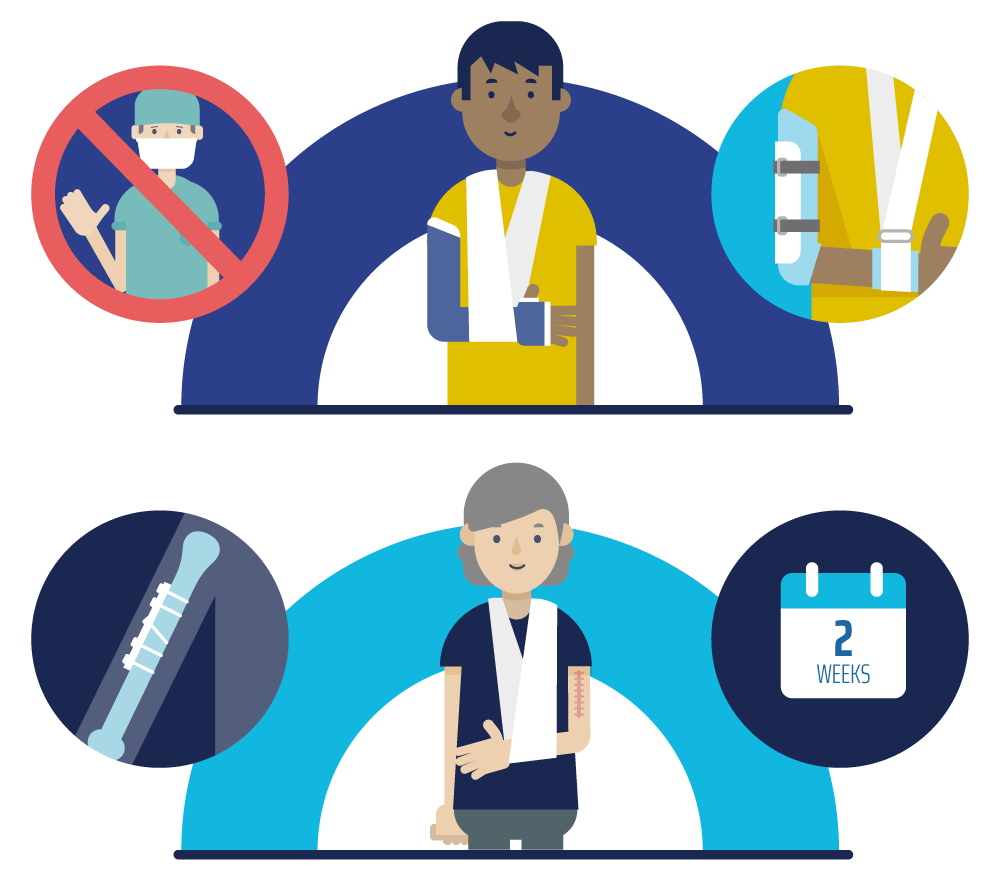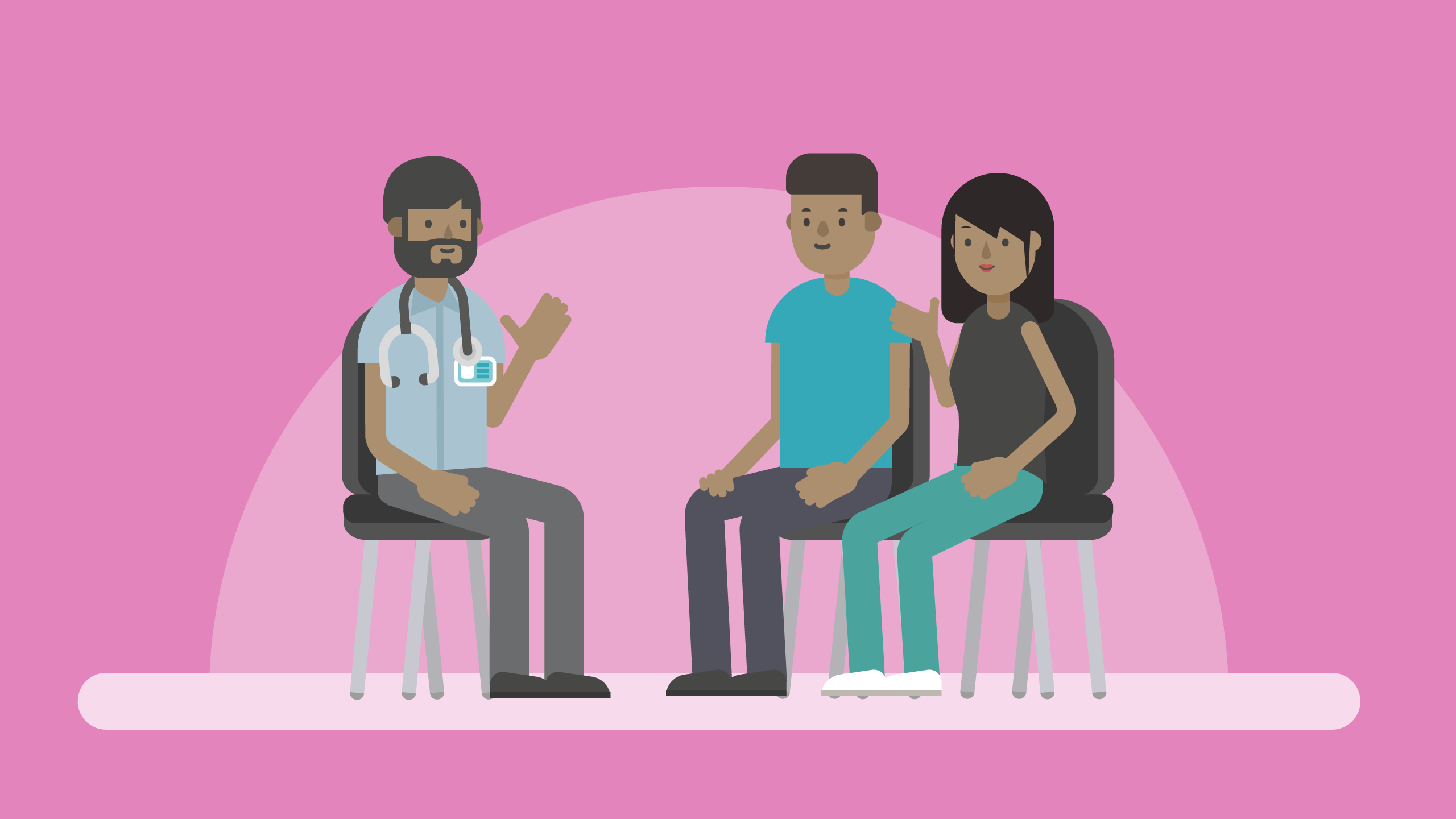
HUSH Patient Information
About the trial
We want to find out whether arm function and quality of life for patients with a fracture to the upper arm is better with the cast-and-brace treatment, or with surgery.

Explanation of treatments
When treating someone with a broken arm, the doctors looking after you have two treatment choices they might recommend.
- Put the arm in a cast for a couple of weeks and then change this to a specially designed ‘brace’ that fits around the upper arm, or to put the arm in a brace straight away depending on your local hospital policy. This treatment does not involve an anaesthetic or an operation, but can be associated with complications in some patients such as prolonged discomfort in the arm, stiffness in the elbow and there is a small risk that the bones will not heal as expected and further treatment might be necessary.
- The second option is surgery. If treated in this way, metal implants are used to hold the bones which aims to reduce the time of recovery and the risk of the bones not healing as expected. However, this treatment requires an anaesthetic and open surgery which may be complicated by things such as an infection.

Our aim
There is currently no high quality evidence that either treatment is a better option in terms of recovery and overall quality of life.
Our aim is to directly compare these two methods of treating fractures of the upper arm. We want to find out whether arm function and quality of life for patients with this fracture is better with the brace treatment, or with surgery. We also wish to compare the costs for the NHS and society that is associated with both approaches. We will then be able to tell doctors and patients if either of these treatments have any actual advantages or disadvantages when compared to each other. It will inform the decision-making process about the best treatment for patients and their doctors in the future.



